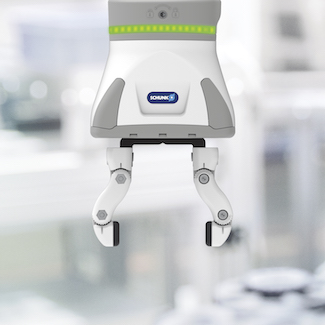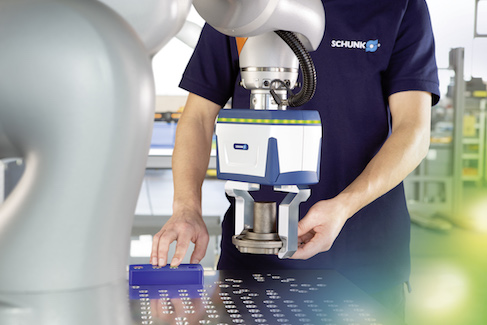The Co-Act That Redefines Human-Robot Collaboration
A milestone in safety, SHUNCK’s EGL-C long-stroke grippers feature an algorithm that protects employees as they work beside the robots–robots that happen to have 300% more gripping force than most of their peers.
Posted: July 10, 2020
It is no longer a question “if” direct human-robot collaboration can be achieved – SCHUNK (Morrisville, NC) has settled the debate with its Co-act EGL-C long-stroke gripper. A milestone in human-robot collaboration, the EGL-C surpasses the typical force-limited 140 N used by most collaborative grippers today and generated gripping forces to 450 N.
An integrated, patent-pending safety algorithm protects employees working alongside their robotic coworkers, opening up the potential in human-robot collaboration for handling weights well beyond small parts assembly.
“The world of robotics, and the necessary periphery for daily robot applications are going to be redefined,” says SCHUNK CEO Henrik A. Schunk, a specialist in gripping systems and clamping technology. “We are experiencing a real boom in cobots and lightweight robots, and they will shape the image of industrial production in the years to come.
“New robots offer enormous freedom of design in the field of handling and assembly, both in terms of the degree of interaction with humans, and also in terms of the gripping technology used,” Schunk adds.
The EGL-C gripper is the latest example of SCHUNK’s innovation in the world of cobots and lightweight robots. In 2019, SCHUNK introduced the EGH Co-act gripper. Easy to install and fully programmable, the EGH makes it easy for companies to implement automation with a cobot.
“The industrial transformation requires to take a fresh and creative look on robotics,” says Schunk. “Scenarios with lightweight robots and cobots must be easy and flexible, even playful to implement. At its heart, it is all about a radical simplification – from the selection of components to configuration and assembly, up to ongoing operation.















